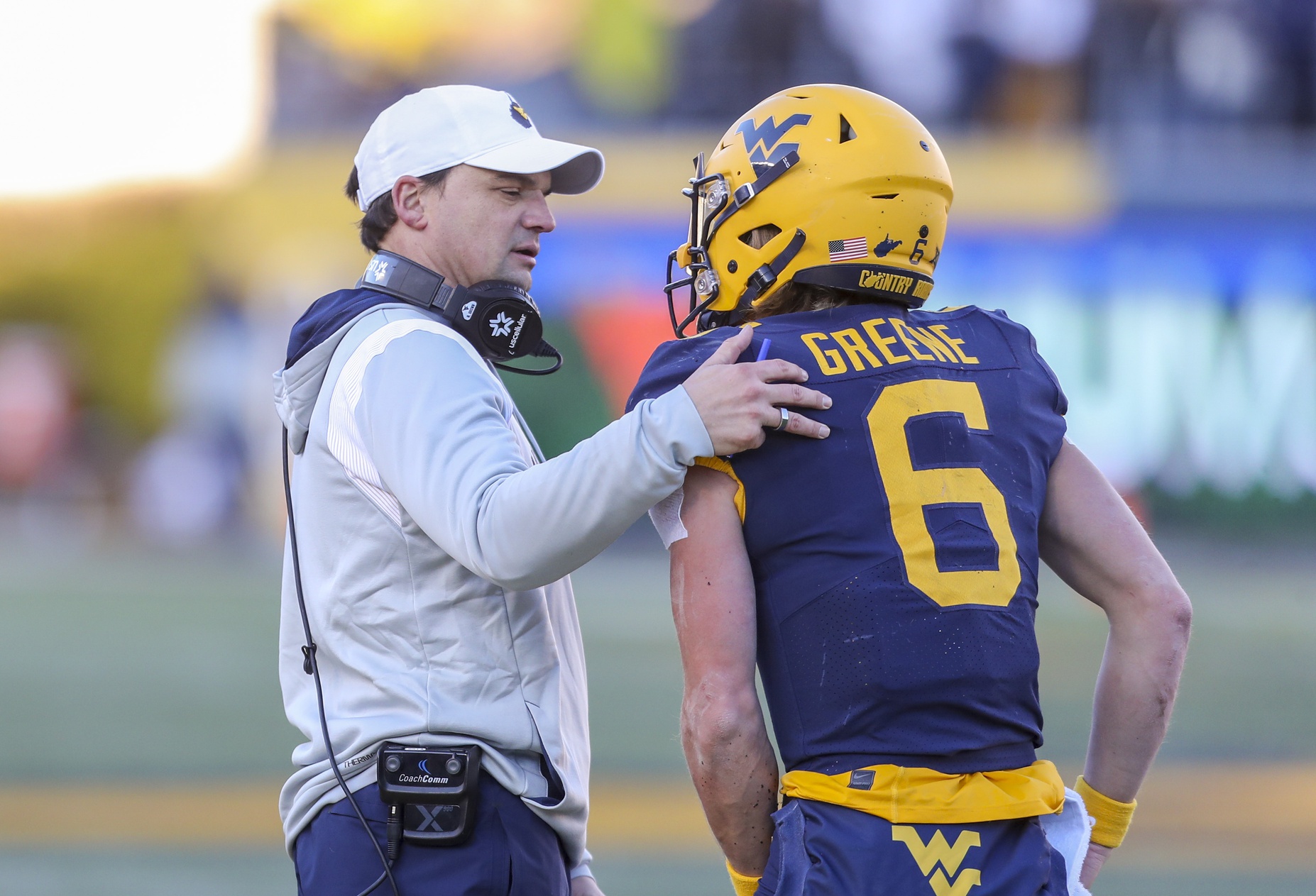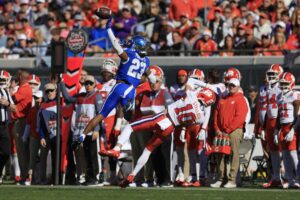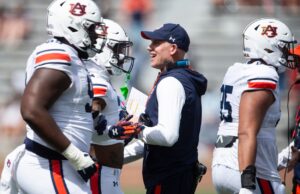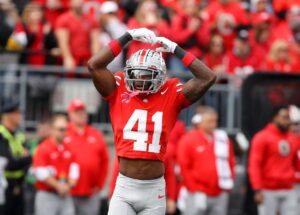In the era of the transfer portal, every team in college football has to deal with roster turnover to the point where it can be difficult to know who will take the field for a given team. West Virginia is no exception. This offseason featured a record number of entrants into the transfer portal. 28 of 64 (or 44%) Power Five teams lost 20 or more players through the portal. West Virginia has lost 20. Because the NCAA introduced portal windows, that number will remain relatively fixed, with the exception of any graduate transfers. While the school will no doubt look to add several more pieces by adding new transfers, the current players on the roster will generally remain. As a result, we are evaluating West Virginia’s roster as it looks now.
Players Lost
In total, West Virginia loses 20 players to the transfer portal. Some of those losses were expected. Unlike in recent years, the Mountaineers did not lose an abundance of regular contributors, though they did lose some. In that category, we find Reese Smith, Kaden Prather, Tony Mathis, and Mike O’Laughlin on offense. Defensively, we see Jordan Jefferson, Taijh Alston, and Charles Woods as the biggest losses.
The total loss of 21 seems high, but keep in mind that 18 other Power Five teams lost more, including a handful of teams losing 30 or more. Many of the Mountaineers’ losses are of young, developing players who offered depth at critical positions. The year-after-year attrition in the secondary continues to be a concern. Indeed, West Virginia loses six cornerbacks and a safety in a continuing trend that leaves the Mountaineers short of secondary depth.
West Virginia added several tight ends over the last couple of recruiting cycles, but they lost two from that room to the portal, including veteran O’Laughlin. On the offensive line, the Mountaineers lose Jordan White and Chris Mayo. White was being developed to play multiple positions on the line, and he certainly had some starter snaps. West Virginia also loses two quarterbacks, JT Daniels and Will Crowder, neither of which comes as a surprise.
The other room that loses significant contributors and depth from the 2022 roster is the defensive line. Jefferson and Alston both played meaningful roles on the line. The production is replaceable, but the losses sting.
Players Gained Through the Portal
West Virginia, so far, has done a decent job at replacing bodies through the transfer portal. To date, they have picked up 11 players through transfer, and four of those players come from the Power Five ranks. They add two wideouts in Ja’Shaun Poke and Devin Carter. Poke adds some quick-twitch playmaking ability, but his highest use might prove to be the return game. Carter has flexed monstrous big-play potential, but he has been inconsistent to date.
Kole Taylor joins the tight end room from LSU, and fans got a good look at what he brings to the table in the Spring game. It seems like the staff finally wants to use the tight end as a receiving threat regularly, and Taylor offers a big target there. Other than the addition of kicker Michael Hayes, West Virginia adds the rest of their transfers to the defensive side of the ball. They picked up three defensive line transfers, two cornerback transfers, and two safety transfers. Two of those additions–Fatorma Mulbah and Beanie Bishop–join from the Power Five ranks. That said, cornerback Montre Miller may prove to be one of the most valuable additions.
With the pickups, the Mountaineers are only down a net of nine players through the portal, which is a gap closed by two factors: a decent-sized high school class and a low number of losses to graduation.
Evaluating the Healthy Size of the Roster
With the addition of 19 high school recruits, eight of whom were early enrollees, West Virginia finds itself with 80 scholarship players entering the 2023 season. This figure falls just shy of the cap of 85 such players permitted by the NCAA. We can certainly expect the staff to look to add a few more transfers to come closer to that limit. For now, though, the Mountaineers have a healthy balance of depth, experience, and youth at most positions on the field. Evaluating West Virginia’s roster starts on the offense.
Offense
At quarterback, they field three scholarship players here. Garrett Greene has two years of eligibility remaining, Nicco Marchiol has three, and Sean Boyle has four. Greene has the extra COVID year, so this is actually his fourth year with the program. At running back, despite the loss of Mathis, WVU features five scholarship players. Justin Johnson is the most senior, with just two years of eligibility. CJ Donaldson likely leads the way after showing a game-breaking combination of skills before his injury last season. That said, Johnson and Jaylen Anderson have both shown their skills on the field. The staff is excited about their pair of true freshmen as well.
At wide receiver, the Mountaineers will still field ten scholarship players. Only three of those ten enter their final year of eligibility, and two others enter their junior seasons. This represents a healthy balance between experience and youth. On the youth side, both Rodney Gallagher and Traylon Ray join the roster as four-star recruits out of high school. Cortez Braham and Jeremiah Aaron offer the most returning production, which is not much, though they yielded targets to Sam James and Bryce Ford-Wheaton last season. At tight end, despite losing two to the portal, West Virginia still carries six scholarship players. The aforementioned Taylor is the only upperclassman, and he certainly looks the part.
Finally, we move to the offensive line where the Mountaineers field 16 scholarship players. This group offers the most balance of experience. Doug Nester is the only lineman in his final year of eligibility. Zach Frazier, Wyatt Milum, Brandon Yates, Ja’Quay Hubbard, and Nick Malone all have two years remaining should they choose to use them. Tomas Rimac is the lone sophomore. Meanwhile, the group boasts four redshirt freshmen and three true freshmen.
Defense
As we have noted in recent seasons, the biggest question marks on the roster come in the secondary, where the Mountaineers continue to lose high numbers to the portal. As a result, they field just seven scholarship cornerbacks and eight scholarship players who play either safety or spear. Because they routinely play with just two cornerbacks, that number at least offers the team a three-deep. That said, three of those are seniors this season, and two of those three (Bishop and Miller) just joined the roster. Jacolby Spells and Andrew Wilson-Lamp both have three years of eligibility remaining, and they will be counted on to offer production in the secondary, both for this season and to shore up the room for the future.
We tell largely the same story at safety. Of the five upperclassmen, two just joined the roster. Of the remaining three, only one (Aubrey Burks) has been on the roster for more than a season. The staff hopes redshirt freshman Christion Stokes can take a step forward. If he does, that bodes well for the future, as he offers perhaps the biggest playmaking ability in the room. That said, because the Mountaineers regularly put three players from this room on the field at any given time, the lack of a ninth or tenth capable body back here makes depth at safety the biggest concern on the roster.
Despite losing four to the portal on the defensive line, the defense finds itself again surprisingly deep at defensive line. In that room, they field 15 bodies. Only one is in his final year of eligibility (transfer Davoan Hawkins). Seven more qualify as upperclassmen. That group includes Sean Martin, who is more than capable of having an All-Conference season this year, Mike Lockhart, Jalen Thornton, and Edward Vesterinen. This position group thus offers a healthy mix across the classes that should allow the staff to share snaps and begin developing its next wave of talent.
Finally, at linebacker (including the bandit position), West Virginia has nine scholarship players. From a recruiting rating perspective, this is the most talented group on the roster. It features six players who carried at least one four-star rating from the major recruiting services. Those players include returning players Lee Kpogba, Lance Dixon, Tirek Austin-Cave, and Trey Lathan. Talented freshmen like James Heard, Jeremiah Trotter, and Ben Cutter also add depth and talent to the room. Outside of the freshmen who have yet to play, the others have shown their moments on the field. With more consistent play, this room could prove a bright spot.
In total, in evaluating West Virginia’s roster, we see, as we normally do, a balance of clear strengths, some depth concerns, and some question marks. Ultimately, we do expect the staff to add some depth, particularly in the secondary, with their five remaining scholarships.

Photo courtesy: Ben Queen-USA TODAY Sports






